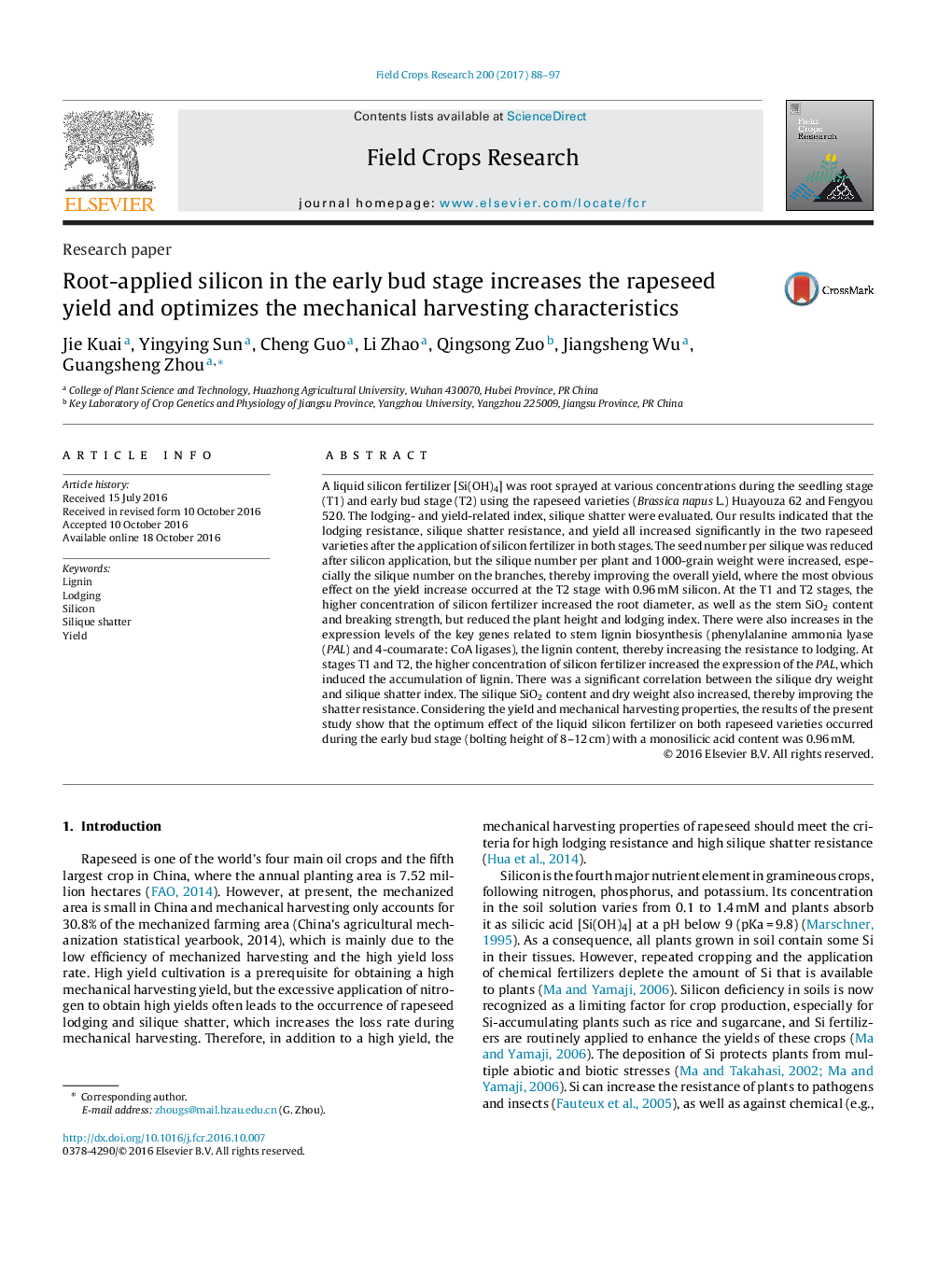| کد مقاله | کد نشریه | سال انتشار | مقاله انگلیسی | نسخه تمام متن |
|---|---|---|---|---|
| 4509809 | 1624663 | 2017 | 10 صفحه PDF | دانلود رایگان |
• Silicon application increased the silique number on the branches.
• The SiO2 and lignin content of the stem and silique increased by silicon.
• PAL expressions in the stem and silique were induced by silicon.
• The yield, resistance to lodging and silique shattering can be improved by silicon.
A liquid silicon fertilizer [Si(OH)4] was root sprayed at various concentrations during the seedling stage (T1) and early bud stage (T2) using the rapeseed varieties (Brassica napus L.) Huayouza 62 and Fengyou 520. The lodging- and yield-related index, silique shatter were evaluated. Our results indicated that the lodging resistance, silique shatter resistance, and yield all increased significantly in the two rapeseed varieties after the application of silicon fertilizer in both stages. The seed number per silique was reduced after silicon application, but the silique number per plant and 1000-grain weight were increased, especially the silique number on the branches, thereby improving the overall yield, where the most obvious effect on the yield increase occurred at the T2 stage with 0.96 mM silicon. At the T1 and T2 stages, the higher concentration of silicon fertilizer increased the root diameter, as well as the stem SiO2 content and breaking strength, but reduced the plant height and lodging index. There were also increases in the expression levels of the key genes related to stem lignin biosynthesis (phenylalanine ammonia lyase (PAL) and 4-coumarate: CoA ligases), the lignin content, thereby increasing the resistance to lodging. At stages T1 and T2, the higher concentration of silicon fertilizer increased the expression of the PAL, which induced the accumulation of lignin. There was a significant correlation between the silique dry weight and silique shatter index. The silique SiO2 content and dry weight also increased, thereby improving the shatter resistance. Considering the yield and mechanical harvesting properties, the results of the present study show that the optimum effect of the liquid silicon fertilizer on both rapeseed varieties occurred during the early bud stage (bolting height of 8–12 cm) with a monosilicic acid content was 0.96 mM.
Journal: Field Crops Research - Volume 200, January 2017, Pages 88–97
